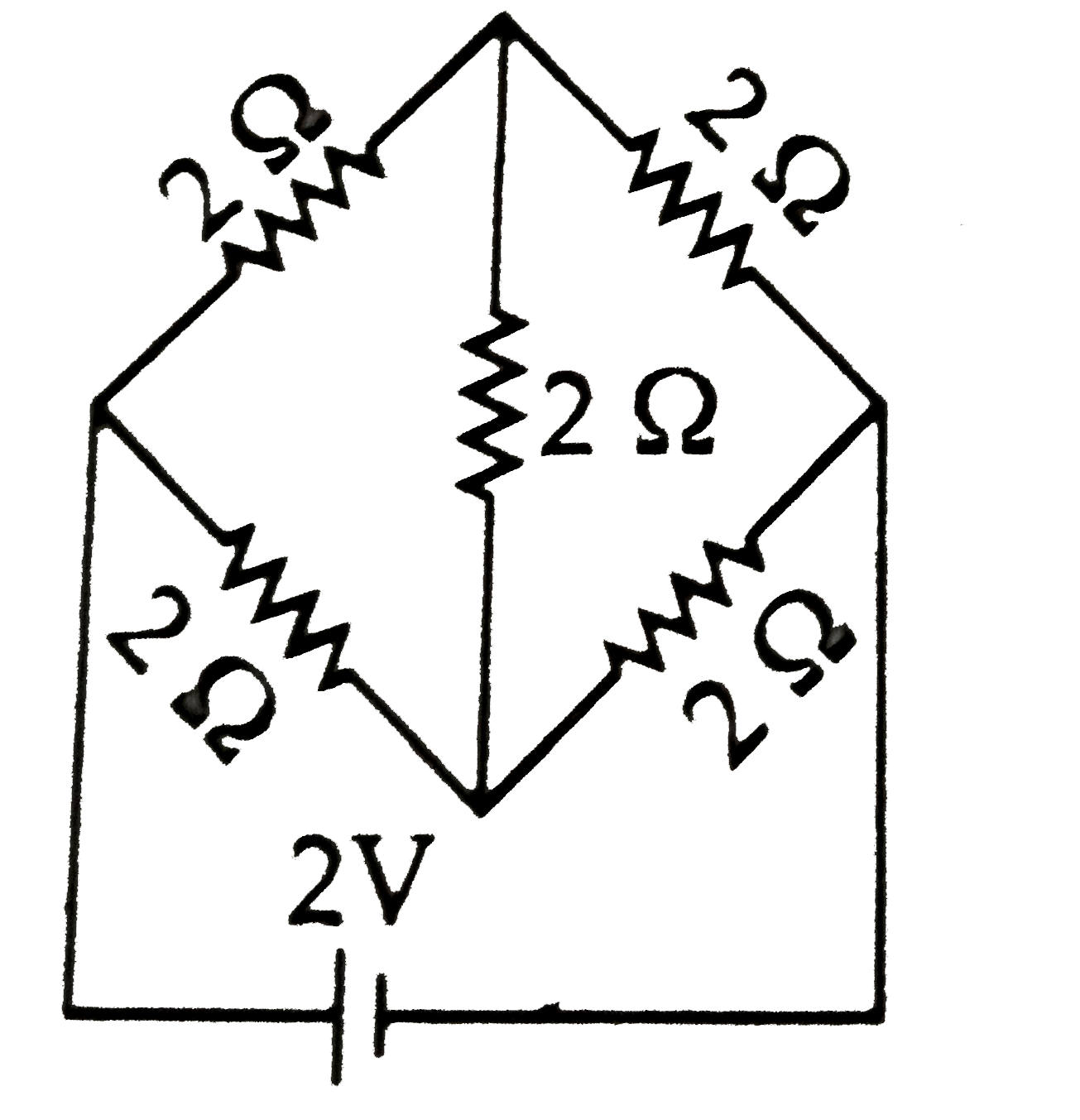A : Electrons flow in external circuit of galvanoic cell while ions flow in internal circuit.
R : Direction of current flow is reverse that of electron flow.
If both Assertion & Reason are true and the reason is the correct explanation of the assertion, then mark (1).
If both Assertion & Reason are true but the reason is not the correct explanation of the assertion, then mark (2).
If Assertion is true statement but Reason is false, then mark (3).
If both Assertion and Reason are false statements, then mark (4).
The correct Answer is:B
To solve the given question, we need to analyze the assertion and reason provided, and determine their truth values as well as the relationship between them.
1. Understand the Assertion:
- The assertion states: "Electrons flow in the external circuit of a galvanic cell while ions flow in the internal circuit."
- In a galvanic cell, oxidation occurs at the anode (where electrons are produced), and these electrons flow through the external circuit to the cathode (where reduction occurs). Meanwhile, ions move through the electrolyte in the internal circuit to balance the charge.
- Therefore, the assertion is True.
2. Understand the Reason:
- The reason states: "Direction of current flow is reverse that of electron flow."
- By convention, electric current is defined as the flow of positive charge. Since electrons are negatively charged and flow from the anode to the cathode, the current flows in the opposite direction, from the cathode to the anode.
- Thus, the reason is also True.
3. Determine the Relationship:
- Now, we need to assess whether the reason correctly explains the assertion.
- The assertion is about the flow of electrons and ions in a galvanic cell, while the reason discusses the direction of current flow relative to electron flow. Although both statements are true, the reason does not explain why electrons flow in the external circuit and ions flow in the internal circuit.
- Therefore, the reason is not the correct explanation of the assertion.
4. Choose the Correct Option:
- Based on our analysis:
- Both the assertion and the reason are true.
- However, the reason does not correctly explain the assertion.
- Thus, the correct option is 2: Both assertion and reason are true, but the reason is not the correct explanation of the assertion.
Final Answer:
Option 2: Both assertion and reason are true, but the reason is not the correct explanation of the assertion.
---
- The assertion states: "Electrons flow in the external circuit of a galvanic cell while ions flow in the internal circuit."
- In a galvanic cell, oxidation occurs at the anode (where electrons are produced), and these electrons flow through the external circuit to the cathode (where reduction occurs). Meanwhile, ions move through the electrolyte in the internal circuit to balance the charge.
- Therefore, the assertion is True.
- The reason states: "Direction of current flow is reverse that of electron flow."
- By convention, electric current is defined as the flow of positive charge. Since electrons are negatively charged and flow from the anode to the cathode, the current flows in the opposite direction, from the cathode to the anode.
- Thus, the reason is also True.
- Now, we need to assess whether the reason correctly explains the assertion.
- The assertion is about the flow of electrons and ions in a galvanic cell, while the reason discusses the direction of current flow relative to electron flow. Although both statements are true, the reason does not explain why electrons flow in the external circuit and ions flow in the internal circuit.
- Therefore, the reason is not the correct explanation of the assertion.
- Based on our analysis:
- Both the assertion and the reason are true.
- However, the reason does not correctly explain the assertion.
- Thus, the correct option is 2: Both assertion and reason are true, but the reason is not the correct explanation of the assertion.
Option 2: Both assertion and reason are true, but the reason is not the correct explanation of the assertion.
Topper's Solved these Questions
- REDOX REACTIONSBOOK - AAKASH INSTITUTECHAPTER - REDOX REACTIONSEXERCISE - ASSIGNMENT SECTION - C
23 Videos
- PRINCIPLES OF QUALITATIVE ANALYSISBOOK - AAKASH INSTITUTECHAPTER - PRINCIPLES OF QUALITATIVE ANALYSISEXERCISE - Assignment (SECTION H)
9 Videos
- SOLUTIONSBOOK - AAKASH INSTITUTECHAPTER - SOLUTIONSEXERCISE - ASSIGMENT (SECTION-J) AAKASH CHALLENGERS QUESTIONS
10 Videos
Similar Questions
Knowledge Check
In an galvanic cell , the electrons flow
Afrom cathode to anodeBfrom anode to cathodeCfrom anode to solutionDfrom solution to cathodeIn a galvanic cell, the electrons flow from :
Aanode to cathode through the external circuitBanode to cathode through the external solutionCcathode to anode through ther external circuitDcathode to anode through ther external solutionIn a galvanic cell electron flow will be from
ANegative electrode to positive electrodeBPositive electrode to negative electrodeCthere will be no flow of electronsDCathode to anode in the external circuit
How does current flow in a circuit?
View SolutionIn the circuit shown below the current flowing from the battery is

View SolutionIn a galvanic cell, the electrons flow from :
View SolutionIn LC oscillation circuit, current flows in reverse direction due to
View SolutionAssertion (A): The conventional direction of current is taken to be the direction of flow of positive charge.
Reason (R) : Direction of current flow is opposite to the direction of flow of electrons in a conductor.
View Solution
